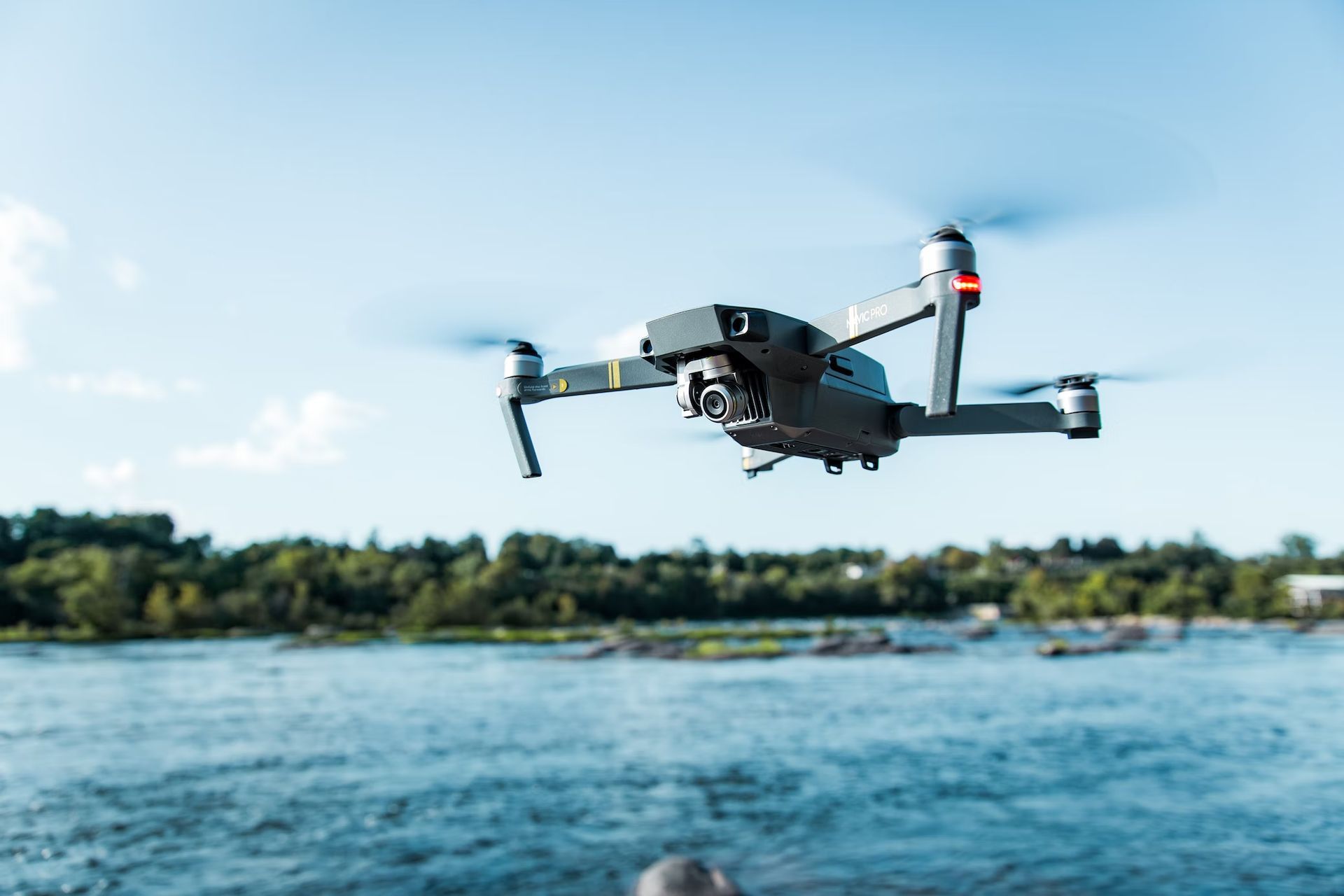In recent years, we have witnessed rapid growth in the field of autonomous artificial intelligence (AAI), that has revolutionized various industries worldwide. AAI involves cutting-edge technologies that enable machines to perform complex tasks independently without the need for human intervention.
These technologies have the potential to transform industries such as healthcare, transportation, and manufacturing, improving efficiency and productivity while reducing costs. The advent of autonomous artificial intelligence represents a significant milestone in the development of intelligent machines and has led to exciting new opportunities for businesses and organizations.
What is autonomous artificial intelligence?
Autonomous artificial intelligence is an advanced subset of artificial intelligence that allows machines to perform tasks independently without the need for human intervention. AAI systems use complex algorithms and machine learning techniques to analyze data, learn from it, and make decisions based on the information obtained. These systems can be used in various industries, from autonomous vehicles to healthcare, to manufacturing and beyond.
Definition of autonomous artificial intelligence
Autonomous artificial intelligence is a type of AI system that can operate independently without human intervention. Unlike traditional AI systems that require human input to function, AAI systems can learn from data, make decisions, and perform tasks without any human input. These systems are designed to be self-sufficient and operate without the need for human oversight.
How is autonomous artificial intelligence different from other AI systems?
The main difference between AAI and other AI systems is that AAI systems operate independently, while other AI systems require human input to function. For example, a traditional AI system may require a human operator to make decisions based on the data it receives. autonomous artificial intelligence systems, on the other hand, can make decisions and take actions on their own.

How does autonomous artificial intelligence work?
Autonomous artificial intelligence systems rely on a combination of technologies such as natural language processing (NLP), computer vision, deep learning, and reinforcement learning to operate independently. These systems have the ability to learn from their experiences and improve their performance over time, which is crucial for their success.
What is a reflex agent in artificial intelligence?
A reflex agent is a type of AI system that responds to stimuli in the environment. This type of agent is designed to make decisions based on the current state of the environment and the actions that are available to it. Reflex agents are typically used in simple tasks where the environment is well-defined, and the actions required are straightforward.
How do reflex agents work?
Reflex agents operate by using a set of rules that dictate how they should respond to stimuli in the environment. For example, a reflex agent designed to navigate a maze might use rules that tell it to turn left if it encounters a wall on its right side. These rules are based on the current state of the environment and the actions available to the agent.
Limitations of reflex agents
While reflex agents can be effective in simple tasks, they have limitations in more complex environments. For example, a reflex agent designed to navigate a maze might get stuck in a dead-end if it is unable to recognize that it needs to backtrack. To overcome this limitation, more advanced AI systems like AAI systems use machine learning techniques to learn from their experiences and make more informed decisions.
Weak AI: Narrow but useful lane of artificial intelligence
Understanding autonomous systems engineering
Autonomous systems engineering is a field that focuses on designing and developing AI systems that can operate independently without human intervention. This field is multidisciplinary, involving experts in computer science, robotics, electrical engineering, and other related fields.
One of the key concepts in autonomous systems engineering is system integration. Autonomous systems must be designed to work together seamlessly, with different components communicating and coordinating their actions. Another important concept is safety, as autonomous systems must be designed to operate safely in various environments.
Differences between autonomous and assisted intelligence
Autonomous intelligence and assisted intelligence are two distinct subsets of artificial intelligence. While both types of intelligence are designed to improve efficiency and accuracy, there are several key differences between them.
Autonomous intelligence
Autonomous intelligence refers to AI systems that operate independently without the need for human intervention. These systems use complex algorithms and machine learning techniques to analyze data, learn from it, and make decisions based on the information obtained.
Examples of autonomous intelligence include:
- Self-driving cars
- Autonomous drones
- Robotic process automation (RPA)
- Smart home devices

Assisted intelligence
Assisted intelligence, on the other hand, refers to AI systems that work alongside humans to improve efficiency and accuracy. These systems are designed to assist humans in their tasks rather than replace them.
Examples of assisted intelligence include:
- Voice assistants (e.g., Siri, Alexa)
- Chatbots
- Virtual assistants
- Data analytics tools
Autonomous artificial intelligence examples
AAI systems can be found in various industries, from healthcare to manufacturing to finance. Here are some examples of AAI systems in action:
- Autonomous vehicles: Self-driving cars use autonomous artificial intelligence to navigate roads, make decisions, and avoid obstacles.
- Healthcare: AAI systems can be used to analyze medical images and help doctors diagnose diseases more accurately.
- Manufacturing: Autonomous artificial intelligence systems can be used to optimize production processes and reduce waste.
- Finance: AAI systems can be used to detect fraud and make more accurate investment decisions.
Assisted intelligence examples
Assisted intelligence systems are designed to work alongside humans to improve efficiency and accuracy. Here are some examples of assisted intelligence in action:
- Voice assistants: Voice assistants like Siri and Alexa can assist users with various tasks, from setting reminders to controlling smart home devices.
- Chatbots: Chatbots can be used to assist customers with common queries and provide support.
- Virtual assistants: Virtual assistants like Google Assistant can assist users with various tasks, from sending emails to scheduling appointments.
- Data analytics tools: Data analytics tools can assist businesses with data analysis and decision-making.
Benefits of Autonomous AI
Autonomous artificial intelligence systems offer numerous benefits to businesses and organizations across various industries. Here are some of the key benefits of autonomous artificial intelligence systems:
Increased efficiency and productivity
AAI systems are designed to operate independently without the need for human intervention. This means that they can perform tasks faster and more accurately than humans, leading to increased efficiency and productivity. For example, AAI systems can be used to automate routine tasks, freeing up human workers to focus on more complex tasks that require human creativity and problem-solving skills.
Improved decision making
AAI systems are capable of analyzing vast amounts of data quickly and accurately. This allows them to make informed decisions based on the information obtained. Autonomous artificial intelligence systems can also learn from their experiences and improve their decision-making abilities over time. This can help businesses make better decisions, leading to improved outcomes and increased competitiveness.

Increased safety
AAI systems can be used to improve safety in various industries. For example, autonomous vehicles can reduce the risk of accidents by using sensors and machine learning algorithms to avoid collisions. Autonomous artificial intelligence systems can also be used to monitor and detect safety issues in manufacturing and healthcare settings.
Reduced costs
AAI systems can help businesses reduce costs by automating tasks and reducing the need for human workers. This can help businesses save on labor costs while also improving efficiency and productivity. Additionally, AAI systems can help reduce the risk of errors and improve accuracy, which can lead to cost savings in various industries.
In conclusion, AAI systems offer numerous benefits to businesses and organizations across various industries. These benefits include increased efficiency and productivity, improved decision-making, increased safety, and reduced costs. As autonomous artificial intelligence technology continues to advance, we can expect to see even more benefits in the years to come.
Challenges of Autonomous AI
While autonomous artificial intelligence (AAI) systems offer numerous benefits, they also present several challenges that must be addressed. Here are some of the key challenges of AAI systems:
Safety and security risks
AAI systems can pose safety and security risks if they are not designed and tested properly. For example, an autonomous vehicle that malfunctions could pose a risk to the passengers and other drivers on the road. Additionally, autonomous artificial intelligence systems can be vulnerable to cyber attacks and other security threats, which could lead to data breaches or other negative outcomes.
Legal and ethical implications
AAI systems raise numerous legal and ethical implications that must be addressed. For example, if an autonomous vehicle is involved in an accident, who is responsible for the damages? Additionally, AAI systems can raise ethical questions about privacy, accountability, and transparency.
Artificial intelligence is both Yin and Yang
Job loss and employment impacts
AAI systems have the potential to automate many tasks that are currently performed by human workers. While this can lead to increased efficiency and productivity, it can also lead to job losses and other employment impacts. This can be particularly challenging in industries that are heavily reliant on human labor, such as manufacturing and transportation.
Human and machine collaboration
AAI systems must be designed to work alongside humans in a way that is safe and effective. This requires careful consideration of how humans and machines interact and how tasks can be divided between them. Additionally, autonomous artificial intelligence systems must be designed to be transparent and understandable to humans so that humans can trust and use the systems effectively.
In conclusion, autonomous artificial intelligence systems present several challenges that must be addressed in order to realize their full potential. These challenges include safety and security risks, legal and ethical implications, job loss and employment impacts, and human and machine collaboration. By addressing these challenges, we can ensure that AAI systems are developed and deployed in a responsible and effective manner.

Future of autonomous AI
Autonomous artificial intelligence systems have already had a significant impact on various industries, and their potential for the future is enormous. Here are some of the key trends, predictions, and challenges related to the future of AAI:
Trends and predictions
One of the key trends in the future of AAI is the continued growth and adoption of these systems across various industries. As autonomous artificial intelligence technology continues to advance, we can expect to see even more use cases and applications in fields such as healthcare, finance, and manufacturing. Additionally, autonomous artificial intelligence systems are expected to become more sophisticated and capable over time, leading to even greater efficiency and productivity gains.
Potential for innovation and advancements
The potential for innovation and advancements in autonomous artificial intelligence technology is enormous. As autonomous artificial intelligence systems become more advanced, we can expect to see even more complex tasks being automated, leading to increased efficiency and productivity. Additionally, advancements in AAI technology have the potential to improve safety, security, and accuracy in various industries.
Challenges to overcome
Despite the enormous potential for AAI systems, there are several challenges that must be overcome. These challenges include safety and security risks, legal and ethical implications, job loss and employment impacts, and human and machine collaboration. Additionally, AAI systems must be designed to be transparent and understandable to humans so that humans can trust and use the systems effectively.
In conclusion, the future of autonomous artificial intelligence is bright, with continued growth and adoption expected across various industries. While there are several challenges that must be overcome, the potential for innovation and advancements in autonomous artificial intelligence technology is enormous, leading to increased efficiency, productivity, and safety in various industries.
Autonomous intelligence vs artificial intelligence
Autonomous intelligence and artificial intelligence are two closely related but distinct concepts in the field of computer science. While both types of intelligence involve the use of technology to perform tasks, there are several key differences between them.
Autonomous intelligence
Autonomous intelligence refers to AI systems that can operate independently without the need for human intervention. These systems are designed to learn from data and make decisions based on the information obtained. Autonomous intelligence is typically used in tasks where there is a high degree of uncertainty or variability in the environment.
Examples of autonomous intelligence include self-driving cars, drones, and robotics systems.
Artificial intelligence
Artificial intelligence, on the other hand, refers to a broader set of technologies that enable machines to perform tasks that typically require human intelligence. This can include tasks such as understanding natural language, recognizing images, and making decisions based on data.
Examples of artificial intelligence include machine learning algorithms, natural language processing (NLP), and computer vision systems.
The ethics and risks of pursuing artificial intelligence
Key differences
The key differences between autonomous intelligence and artificial intelligence lie in their ability to operate independently and the types of tasks they are best suited for. Autonomous intelligence systems are designed to operate independently, while artificial intelligence systems typically require some level of human intervention.
Additionally, autonomous intelligence systems are best suited for tasks where there is a high degree of variability in the environment, while artificial intelligence systems are best suited for tasks that require a high degree of understanding and decision-making based on data.
In conclusion, while autonomous intelligence and artificial intelligence share many similarities, they are distinct concepts with different applications and capabilities. Understanding the differences between these two types of intelligence is crucial for developing and deploying effective AI systems in various industries.
| Concept | Autonomous Intelligence | Artificial Intelligence |
| Definition | AI systems that operate independently without human intervention. | A broad set of technologies that enable machines to perform tasks that typically require human intelligence. |
| Level of human intervention | Minimal or no human intervention needed. | Typically requires some level of human intervention. |
| Types of tasks | Best suited for tasks with high variability in the environment. | Best suited for tasks that require understanding and decision-making based on data. |
| Examples | Self-driving cars, drones, and robotics systems. | Machine learning algorithms, natural language processing (NLP), and computer vision systems. |
Conclusion
The future of autonomous artificial intelligence is incredibly promising, and its impact on the industry cannot be overstated. As technology continues to advance, we can expect to see even more innovative autonomous artificial intelligence applications in various industries. These cutting-edge technologies will revolutionize how we approach complex problems and help us create more efficient, productive, and sustainable systems.
The importance of AAI for the industry cannot be underestimated, and businesses and organizations that invest in this technology are likely to gain a competitive advantage over their peers. As we move towards a more automated and connected world, autonomous artificial intelligence is poised to become one of the most significant technological advancements of our time.






